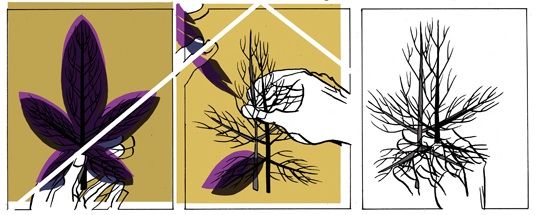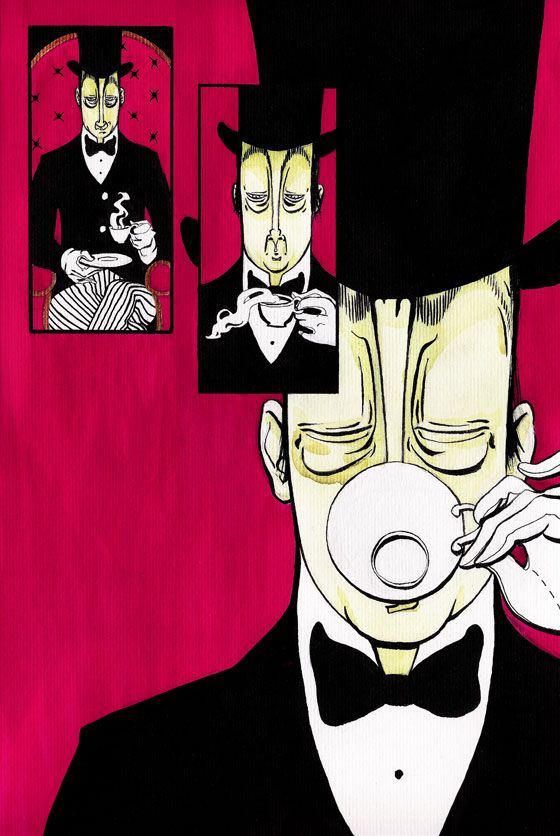Half the fun in awards like the Eisners is second-guessing the judges—everyone loves to discuss what should have been put on the list and what should have been left off. Reading through the nominees for Best Digital Comics, though, raised a bigger question for me: What comics really belong in this category?
All this year's nominees are good, but as I read them, I kept thinking “This isn’t really a webcomic.” At first I attributed this to the lack of gamer jokes, Project Wonderful ads, and “about” pages. As I kept going, though, I realized that most of them would work just as well on paper as on the web, and their presence side by side in the same category was simply an accident of distribution.
What's in a webcomic? A creator named KEZ recently articulated this very well:
My comic, The War of Winds, is a webcomic. It exists primarily in the digital format, and uses the internet as a vehicle for promotion and advertisement. It is read on a live connection to the world wide web. It has a site full of extra information that heightens the reading experience. It was created expressly for online distribution, not for print. It is free, and I’m there a lot communicating with the people who read my work. My comic would NOT exist without the internet due to logistical problems and the need for print publication.
Looked at in this light, only one of the Eisner nominees really fits the bill. The others would work as well on paper. Already we have seen Brian Fies win an Eisner in the Best Digital Comics category for Mom’s Cancer and then, two years later, get two nominations for the print version. This year’s nominations include not only the print version of Fishtown but also the MySpace Dark Horse Presents anthology.
As the landscape shifts, I think it makes more and more sense to nominate online comics in the appropriate categories—best writer, best short story—and reserve the Best Digital category for comics that could only exist on the web.
With that in mind, here’s a quick look at this year’s nominees.
Bodyworld, by Dash Shaw: This is a wonderfully complex, thought-provoking sci-fi comic, and Shaw really uses the web as a medium: Each chapter is presented as a series of three-panel strips that scroll smoothly down the page, with a few breaks for bigger scenes. (It does break neatly into comics pages, but this isn't obvious when you read it on the web.) The saturated color also looks good on the screen but would be tough to duplicate on paper. The website is plain but makes it easy to read the comic (or resume reading it after a break) and it includes one extra feature, a map of the story’s setting.
Finder, by Carla Speed McNeil: A single episode in the long-running Finder saga, this comic works pretty well as a stand-alone story but would do better with some context. The format strongly suggests that it's a print comic that's making its first round on the web, though. It’s available on two websites. The Shadowline site has a very basic, stripped-down reader. McNeil’s own site gives a bit more context, in the form of earlier volumes, but neither site orients the reader to the setting or the place of this story in the series.
The Lady’s Murder, by Eliza Frye: This is a short story, just 33 pages, in which the murder victim, a woman of pleasure, shall we say, is described by the men who knew her, each from his own perspective. The art is lovely; it reminds me of Toulouse-Lautrec posters with a dash of Edward Gorey. The comic has its own dedicated website, with a blog and links to the creator’s other works, but nothing would be lost if it were to be moved to print. This should be nominated for best art, not best webcomic.
Speak No Evil: Melancholy of a Space Mexican, by Elan Trinidad: An odd little comic about migrant workers who are literally voiceless—their mouths and noses are removed and kept in a vault. You can read all kinds of social metaphors into it if you like, but the creator really just intended it to be a simple story that's sad but has flashes of humor. Trinidad's real accomplishment, to my mind, was to illustrate this odd concept convincingly and set it into a world where everything makes sense, in a skewed sort of way. The comic is on its own site, with easy navigation, and it’s formatted to be read on a screen. There’s an interesting afterword that puts the work in context. I'd say this one is marginal, because the website does add to the reader's overall experience.
Vs., by Joe Infurnari and Alexis Sottile : This short story has a few clever, if not entirely original, conceits: Typical New York types are transformed into imaginary animals and torment the narrator with their noisy lifestyles. The art is expressive and dynamic—it reminded me strongly of Mad's Dave Berg—and color is thoughtfully and sparingly applied. On the downside, it’s in rhyme—well done, but not to my taste, I'm afraid. This is part of a continuing series hosted by Smith Magazine. It’s easy to navigate, the comic is formatted for the screen, and there is a spot for readers to comment. The color looks better on the screen than it would on paper, but other than that, there's no need for this to be a webcomic.
So there you have it. Five very good comics, all worth a read, and all deserving of Eisner nominations—just not in the same category.


